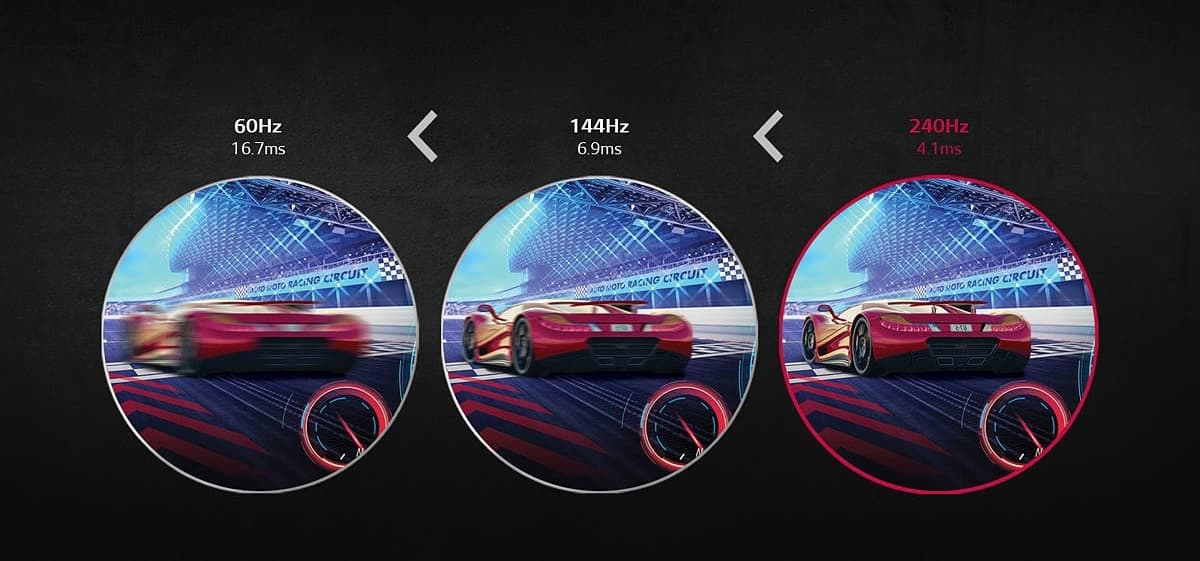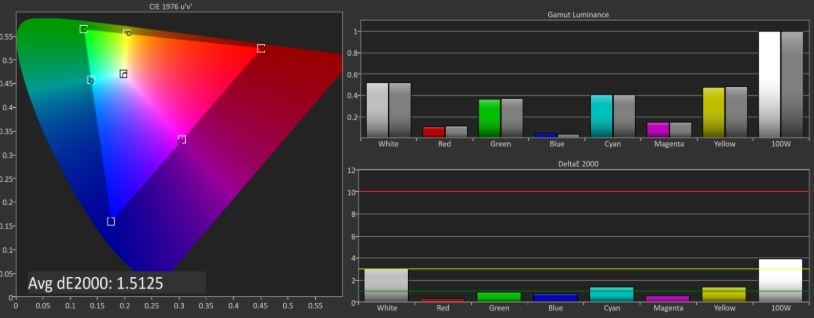In the age where PC is more popular than console, monitors are preferable over TVs as a primary display device. Even console gamers are turning to the best console gaming monitors and ditching the couch experience to prioritize high-quality visuals. As modern monitors tend to boast faster response times, high refresh rates, and better color accuracy compared to televisions, it’s no surprise that console gamers are turning to monitors.
Even if you are using a laptop as a gaming monitor, you still need to find out a thing or two about panels.
The real question is, out of IPS vs TN vs VA panel displays, which is best? 🖥️ 🤔
To answer that question, we went on a mission to find out which panel is the best for gaming in 2020—here’s what we found.
IPS vs. TN vs. VA: What Are They?
Before we get into too much detail, let’s take a look at each of the display panels we are comparing and how they differ.
What Is an IPS (In-Plane Switching) Panel?
Designed to solve the limitations of TN panels, IPS displays deliver the best all-around experience for professionals and gamers. Its main advantages include fantastic visuals, presenting much better color reproduction and greater contrast ratios than TN panels—a reason why gamers like myself love them.

You won’t have a problem with viewing angles, either, as IPS panels can be viewed from shallow angles and you’ll still be able to see what’s on the screen—awesome, I know!
On the other hand, IPS panels are limited compared to other panels when it comes to response times and refresh rates, seeing as they can only go as low as 4ms. Not to mention how ridiculously expensive they tend to be! Though, sometimes, it might just be worth spending a little more for a quality panel suitable for gaming.
What Is a TN (Twisted Nematic) Panel?
If you’re not into image editing or you simply don’t care for color accuracy, then a TN panel display is the way to go. Not only are they more affordable—they are more responsive, with modern TN displays supporting high refresh rates of up to 240Hz. Furthermore, the best 240 Hz monitors are considered to be the finest ones when it comes to gaming displays.
What’s more, is that twisted nematic panels boast Sonic-like 1ms response times, despite being the cheapest among other display panels.

Of course, not everything is sunshine and rainbows; TN panels don’t offer high-quality visuals, viewing angles are pretty poor, and colors tend to look washed out. Adding to the silver lining, TN panels don’t support HDR—so, if you’re a professional photographer as well as a gamer, we suggest that you stick with an IPS panel. After all, they are more color accurate.
What Is a VA (Vertical Alignment) Panel?
Characterized by having the best contrast and image depth, vertical alignment panels are a nice middle ground between IPS and TN panels. Similarly to TN panels, VA panels are known for their image depth and good contrast ratios. Fortunately, their viewing angles are much better than TN displays, while their brilliant color reproduction makes for the best gaming monitor.
Alas, VA monitors are notorious for their high response times and ghosting problems—something that you don’t want to deal with when gaming in 2020. Trust me when I say that anything above 5ms is a no-go for fast-paced gaming!

IPS vs. TN vs. VA: Pros & Cons
We touched base on a few advantages and disadvantages of each panel type—now let’s compare the pros vs cons in more detail so that you can make an informed decision on which display is best for you.
IPS Panel: Pros & Cons
Pros:
- Best viewing angles
- Wide color gamut
- Fantastic visuals
Cons:
- Expensive
- Response times only go as low as 4ms
TN Panel: Pros & Cons
Pros:
- Fastest panel
- Affordable
- Supports 240Hz refresh rates
Cons:
- Low-quality color reproduction
- Poor viewing angles
VA Panel: Pros & Cons
Pros:
- Best contrast ratios
- Image depth
- Generally more color accurate
Cons:
- High response times
- Not as common anymore
IPS vs. TN vs. VA: Refresh Rates
Measured in Hertz (Hz), response time is simply how many frames a monitor can display per second. Common among all three panels, 60 Hz and 144 Hz are the standard refresh rates you’ll find in most monitors today. Albeit, gaming monitors with a 240 Hz refresh rate do exist, they just aren’t very common—at least not yet.

A key advantage of TN panels is that they boast excellent refresh rates and response times. Not to mention how they are the only panel able to hit the mentioned 240 Hz refresh rate at 1080p and 1440p. VA panels are in second place when it comes to refresh rates, at 200 Hz for ultrawide displays.
Last, but certainly not least, IPS panels top out at 165 Hz—although some can reach 240 Hz at 1080p. Of course, the higher the refresh, the more responsive actions on the screen will be—so when gaming, you’ll be able to reach framerates beyond 60 FPS.
Winner: TN 🏅
IPS vs. TN vs. VA: Response Times
Measured in milliseconds (Ms), a pixel response time is how long it takes a pixel to change from white to black, black to white, or from one shade of gray to another. Simply put, the faster the response time, the more fluid actions will be when gaming. Higher response times often found in IPS monitors can lead to frustrating motion blur.
Saying that, some people don’t notice the difference between a 1ms and 4ms response time. However, it’s known that low response times make fast-paced gaming sessions pleasurable, so aim for anything below 5ms.

For gaming, TN is the way to go as they have a rated transition time of 1ms, as well as high refresh rates suitable for online gaming. On the contrary, IPS panels tend to have a transition time of 4ms, making them twice as slow as TN panels. Which leaves VA panels which are best suited for casual gaming as they are the slowest of the three, measuring 5ms to a whopping 10ms.
Winner: TN 🏅
IPS vs. TN vs. VA: Viewing Angles
TN displays are known for their poor viewing angles, a reason IPS panels exist. Surprisingly, even VA panels have an advantage over TN panels when it comes to viewing angles. Sure, they aren’t quite as good as IPS panels, except they are a perfect middle ground between an IPS and TN monitor.
Although IPS displays do boast better viewing angles (178/178) out of the three types of panels, they suffer from IPS glow. A somewhat distracting light where the LCD shines through which can be frustrating in darker scenes. Of course, you’ll only notice this when viewing from certain angles, so it isn’t something to fret over.

Compared to IPS panels, VA’s aren’t as good owing to the contrast shifts at certain angles. Still, they are far better than TN panels which require you to view them dead center to avoid shifts.
Winner: IPS 🏅
IPS vs. TN vs. VA: Color Gamut and Color Quality
IPS panels offer the best color quality compared to TN and VA panel displays. Now, you might not care for high-quality color reproduction, though in 2020, it shouldn’t be overlooked. When it comes to color gamut, IPS and VA panels provide a superior experience, much like their viewing angles.
Starting at sRGB, VA panels offer color gamuts around the 125% sRGB mark. While IPS monitors come equipped with 95%-to-100% sRGB, DCI-P3, and Adobe RGB coverage depending on what monitor you pick out.

TN panels, however, are often limited to sRGB—some don’t even cover the sRGB gamut. Sucks, I know, but it’s why IPS is the best technology for photo editors and ‘hardcore gamers’. Onto color quality, TN panels are weaker with a native 6-bit output. If you’re after something better, IPS and VA panels come with native 8-bit.
Winner: IPS 🏅
IPS vs. TN vs. VA: Brightness and Contrast
VA panels are characterized by having the best contrast ratios (around 2500:1) and image depth of the three-panel types—an important factor when it comes to picture quality for a realistic gaming experience. On the contrary, IPS and VA panels have a contrast ratio of around 1000:1—something you’ll notice when in a dark environment where black appear gray.

To be truthful, there really isn’t a noticeable difference between the technologies when it comes to brightness owing to the backlight used. Alas, as we’ve mentioned, IPS panels suffer from IPS glow, a frustrating light that can become distracting when you view the screen at a different angle.
Winner: VA 🏅
Final Words
So, you may now be wondering, which is better: IPS, TN or VA? While IPS screen displays deliver the best all-around experience for professionals and gamers, TN panels are more affordable, more responsive, and support high refresh rates. Therefore, it really depends on two things: your budget and if you want to prioritize visuals > responsiveness.
Check out our guide on the best budget gaming monitors if budget is your primary concern.
Recap:
- IPS: Best overall for viewing angles, color accuracy, and fantastic visuals.
- TN: Fast response times, supports high refresh rates and is more affordable.
- VA: Best contrast ratios and better viewing angles than TN panels.
Now that you understand which panel type is best for gaming, what about the resolution? If you’re curious as to what resolution is best for gaming, why not check out our comprehensive guide? We might just have the answers to all of your questions!